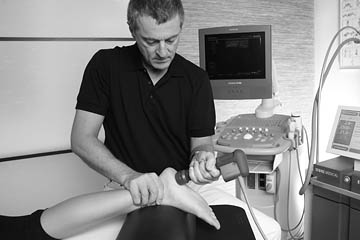Extracorporeal Shockwave Therapy (ESWT) | Innovative treatment method
|
Extracorporeal Shockwave Therapy (ESWT) is a modern and effective method for treating various painful conditions. This procedure enables the targeted therapy of pathological changes in tendons, ligaments, capsules, muscles and bones. In the USA, ESWT is also particularly popular for treating cellulite. How shockwave therapy works During therapy, the affected tissue is treated with high-energy focused shockwaves and low-energy radial sound waves. This combination:
|
ESWT offers a non-invasive, low-pain solution to promote natural healing and is an advanced alternative to conventional therapies. |
Chronic painDo you suffer from acute or chronic pain in your muscles, tendon insertions, shoulders or heels, or do you have headaches or back pain that has been present for years, as a result of which your natural movements and quality of life are significantly restricted? Extracorporeal shock wave therapy (ESWT) is a modern, highly effective treatment method in pain therapy. Focused high-energy extracorporeal shock wave therapy is used primarily to treat chronic overuse injuries such as tennis or golf elbow, calcific tendonitis of the shoulder, or heel spurs. It is now also used to treat postural disorders, myofascial syndrome and dysfunctional movement patterns with trigger points, as well as to eliminate cellulite. Therapy with ballistic (radial) shock waves is not only possible for chronic manifestations, but also for acute complaints. Radial shock wave therapy is particularly effective for acute sports injuries involving muscle and tendon strains. We have a state-of-the-art shock wave machine and many years of experience in this field. Dr. Surminski is a member of DIGEST (the German-speaking International Society for Extracorporeal Shockwave Therapy). Which conditions can be treated?
|
ProcedureTo perform the treatment, a shock wave applicator is moved over the pain zone, if necessary under the control of an ultrasound device. The therapy itself takes 20 to 30 minutes. As a rule, the therapy extends over 4 to 6 sessions, and for some chronic conditions up to 10 sessions are necessary, 1 to 2 times per week. Eight to ten days after the first treatment, a significant pain relief can be observed in most patients, although in some cases it can only be expected after 10 to 12 weeks.
|







